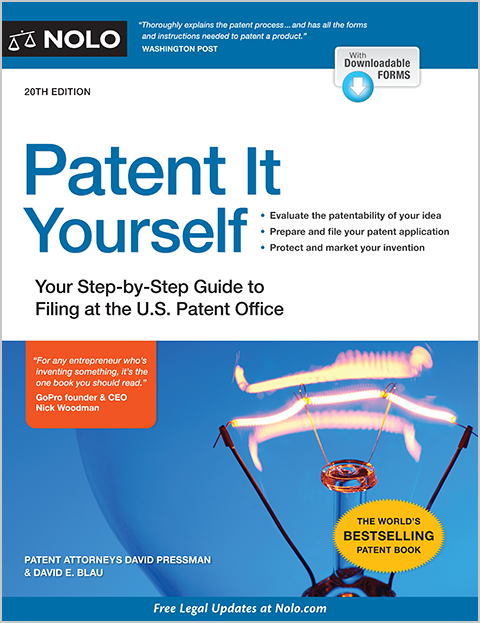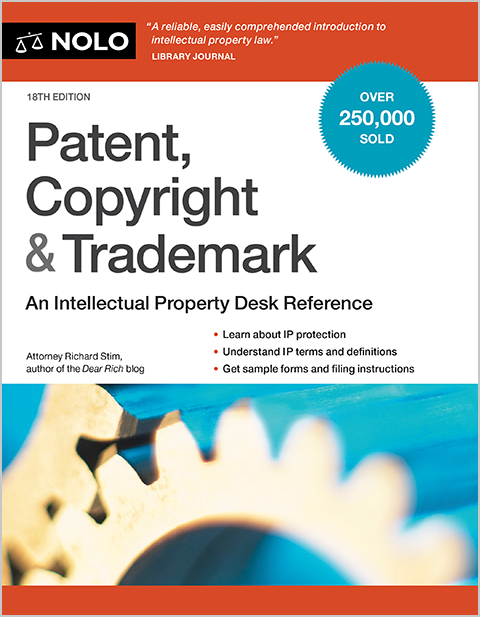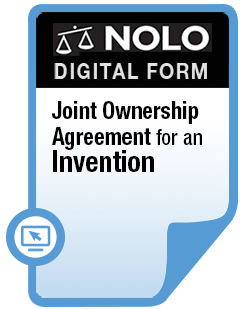Choose Trademark Class 3 if you're registering a trademark for soaps, perfumery, essential oils, cosmetics, hair treatments, and cleaners.
Trademark Class 3 includes cosmetics, skin and hair treatments, cleaners, and substances for laundry, cleaning, polishing, scouring, and abrasive liquids.
Specifically, the class includes lipstick, mascara, soaps, facial cleansers, hair dye, bleaches, and all-purpose cleaners.
What Goods Are Included Under Trademark Class 3?
The following is a more comprehensive list of Class 3 goods:
- Toiletries, adhesives for affixing false hair, adhesives for cosmetic purposes, aloe vera preparations for cosmetic purposes, nonmedicated balms, cosmetic creams, cosmetic preparations, cosmetics, cotton wool for cosmetic purposes, adhesives for affixing false eyelashes, false eyelashes, false nails, greases for cosmetic purposes, henna for cosmetic purposes, massage gels other than for medical purposes, pumice stone, cotton swabs/cotton sticks for cosmetic purposes, tissues impregnated with cosmetic lotions, and nonmedicated toiletry preparations.
- Oral hygiene preparations, breath freshening sprays, breath freshening strips, preparations for cleaning dentures, dental bleaching gels, dentifrices, denture polishes, and nonmedicated mouthwashes.
- Perfume, fragrances, amber being perfume, cologne, extracts of flowers being perfumes, fumigation incenses, ionone being perfume, lavender water, mint for perfumery, musk being perfumery, scented water, and toilet water.
- Body cleaning, beauty care preparations, douching preparations for personal sanitary or deodorant purposes, and beauty creams for body care.
- Makeup, cosmetic preparations, eyebrow pencils, eyebrow cosmetics, cosmetic preparations for eyelashes, lipsticks, lip glosses, makeup preparations, makeup powder, makeup removing preparations, mascara, nail varnish, nail polish, nail care preparations, nail art stickers, cosmetic pencils, and decorative transfers for cosmetic purposes.
- Soaps, gels, almond soap, antiperspirant soap, cakes of soap, deodorant soap, shower and bath gels, nonmedicated soap, and soap for foot perspiration.
- Bath preparations, cosmetic bath salts, cosmetic preparations for bath and shower, and deodorants and antiperspirants.
- Skin care preparations, almond milk for cosmetic purposes, astringents for cosmetic purposes, beauty masks, facial cleansing milk, facial cleansers, body lotions, petroleum jelly for cosmetic purposes, cosmetic preparations for skin care, suntanning preparations, sunscreen creams, and talcum powder.
- Hair preparations and treatments, beard dyes, hair bleaching preparations, dry shampoos, basma dye for cosmetic purposes, hair lotions, hair dyes, hair colorants, hair waving preparations, hair sprays and gels, hydrogen peroxide for use on the hair, mustache wax, permanent waving lotions, hair pomades, hair shampoos, and hair conditioners.
- Hair removing creams, shaving preparations, aftershave, aftershave lotions, alum stones being astringents for cosmetic purposes, depilatory wax, depilatories, pastes for razor strops, shaving soap, pre-shaving preparations, and shaving stones being astringents for cosmetic purposes.
- Animal grooming preparations, cosmetics for animals, deodorants for pets, shampoos for pets, and pet fragrances.
- Essential oils, aromatic oils, mint essence being essential oil, bergamot oil, essential oils for flavorings for beverages, essential oils of cedarwood, essential oils of citron, ethereal essences, ethereal oils, cake flavorings being essential oils, gaultheria oil, jasmine oil for personal use, lavender oil, essential oils of lemon, oils for cosmetic purposes, oils for toiletry purposes, oils for perfumes and scents, rose oil for cosmetic purposes, and terpenes being essential oils.
- Cleaning preparations, fragrancing preparations, ammonia for cleaning purposes, detergents for household use, antistatic preparations for household purposes, canned pressurized air for cleaning and dusting purposes, cleaning chalk, cloths impregnated with a detergent for cleaning, dry cleaning preparations, drying agents for dishwashing machines, floor wax remover, lacquer-removing preparations, nonslipping wax for floors, oil of turpentine for degreasing, oils for cleaning purposes, paint stripping preparations, parquet floor wax, cleaning preparations to make the leaves of plants shiny, polish for furniture and flooring, polishing preparations, polishing wax, polishing creams, polishing rouge, jewellers' rouge, rust removing preparations, scouring solutions, shining preparations being polish, stain removers, turpentine for degreasing, varnish removers, volcanic ash for cleaning, wallpaper cleaning preparations, household fragrances, air fragrancing preparations, incense, joss sticks, potpourri, sachets for perfuming linen, and scented wood.
- Vehicle cleaning preparations, windscreen cleaning liquids, windshield washing fluid, car polish, car wax, automobile cleaners, and automobile, tire, glass, and wheel cleaning preparations.
- Laundry preparations, bleaching salts, bleaching soda, color-brightening chemicals for household purposes, fabric softeners, laundry bleach, laundry bleaching preparations, laundry blueing, laundry glaze, laundry wax, laundry presoak, quillaia bark for washing, laundry starch, soap for brightening textile, washing soda for cleaning, and tailors' wax.
- Leather and shoe creams and polishing preparations, creams for leather, waxes for leather, leather preserving polishes, shoe cream, shoe polish, shoe wax, shoemakers' wax, and cobblers' wax.
- Abrasives, abrasive cloth and paper, emery paper, emery cloth, glass cloth being abrasive cloth, polishing stones, polishing paper, sandcloth, and foot smoothing stones.
What Goods Aren't Included Under Class 3?
But you would not use Class 3 if you're applying for:
- chemical chimney cleaners (Class 1 - Chemicals)
- degreasing preparations for use in manufacturing processes (Class 1 - Chemicals)
- deodorants other than for human beings or for animals (Class 5 - Pharmaceuticals), and
- sharpening stones and grindstones (Class 8 - Hand Tools).
Examples of Trademarks in Class 3
You can find trademarks that have been applied for or registered by the United States Patent and Trademark Office (USPTO) under Class 3 in the Trademark Electronic Search System (TESS), an electronic trademark database.
Some well-known examples of Class 3 marks include:
- LISTERINE (breath fresheners)
- MAYBELLINE (cosmetics), and
- AVEDA (shampoos and conditioners).
USPTO Trademark Classes
The USPTO, the federal agency that oversees the registration of federal trademarks, divides marks into 45 different classes of products or services. The purpose of these classes is to allow different types of businesses to register their trademarks into categories most related to their core business.
The first 34 classes consist of different broad categories of goods. The last 11 classes consist of different broad categories of services.
Related or Coordinated Classes to Class 3
If you're not sure whether you should apply for your mark under Class 3, you can consider a "coordinated" class. A coordinated class is one that's related to another class, usually because the USPTO has determined that applicants filing within one particular class often file in other specific classes, too.
For Class 3, the USPTO has determined the following classes to be coordinated classes:
- Class 5 - Pharmaceuticals
- Class 21 - Housewares and Glass
- Class 35 - Advertising and Business Services
- Class 42 - Computer and Scientific Services, and
- Class 44 - Medical, Beauty, and Agricultural Services.
Trademark Filing Fees
The trademark class system will also affect the scope of the registration fees that you pay. The USPTO charges a set filing fee per class of goods or services. So, if you apply for a trademark for posters (Class 16) and shirts (Class 25), you must pay the filing fee for two classes, which is double the filing fee for one class. (37 C.F.R. §2.6(a)(1)(2022).)
Be sure to indicate the correct class at the time you're registering a trademark—if the application doesn't already do so for you. If you list the incorrect class, you must restart the application process, and your filing fees will not be refunded.
Your registration is restricted to those classes that encompass the goods or services you're already offering (as shown by the specimens you submit) or that you plan to offer (if you're registering on an intent-to-use basis).
USPTO Specimens
At some point in the trademark application process, you'll need to supply the USPTO with a specimen. A specimen is a real-world example of how your mark is being used in association with your goods or services. In other words, it's how customers come across your mark as they shop for your goods or services.
If you're applying for a use-in-commerce trademark (you're already using your trademark to sell your goods or services), then you'll submit a specimen with your trademark application. If you're applying for an intent-to-use trademark (you haven't started using your trademark yet but plan to), then you'll submit a specimen after you've already submitted your trademark application once the trademark examiner—the person at the USPTO reviewing your application—requests it from you.
For every class of goods or services, you'll need to submit at least one specimen regardless of how many goods or services are listed under the class. So, if you apply for hats, t-shirts, and socks under Class 25, then you'll only need to submit one specimen and you can choose which good to include in your specimen.
(37 C.F.R. §2.34(b)(2)(2022).)
Acceptable Specimens for a Goods Trademark
The specimen must show the mark as used on or in connection with the goods in commerce. Specifically, a specimen for a goods trademark must show use of the mark in a manner that would be perceived by potential purchasers as identifying the applicant's goods and indicating the goods' source.
When a trademark is on the good itself or on the packaging or containers of the goods, photographs or facsimiles showing the trademark in use on or with the goods are acceptable.
A specimen for a goods trademark can appear:
- On the good itself. The trademark can be imprinted on the body of the goods, as with metal stamping; it can be applied by a rubber stamp; or it can be inked on by using a stencil or template.
- On a tag for the good. For example, you could include your trademark on a sales tag above the product price, or it can be printed below the product specifications on a mattress tag.
- On a label for the good. For instance, your trademark could be on the UPC barcode sticker or on a drink's ingredients label. You could also use shipping or mailing labels affixed to the goods as long as the trademark functions as an indicator of the good's source. For example, if the trademark appears only on the return address, then the specimen wouldn't be appropriate.
- Directly on the packaging or container for the good. The trademark can be on any type of commercial packaging that's normal for the particular goods as they move in trade, such as shipping boxes or shelf display packaging. For instance, gasoline pumps are normal containers or "packaging" for gasoline.
- On a display associated with the goods. If you sell your goods at trade shows or community events, your trademark could be printed out next to a display of your goods as long as customers can connect your trademark with the goods. For example, your trademark could be printed on the tablecloth at your booth or on a sign hanging from your pop-up tent.
(37 C.F.R. §2.56(2022).)
Webpage Listing for a Goods Trademark
If you sell your goods online—whether on your own website or on a third-party online marketplace—you can use a screenshot of the webpage where your good is listed for sale as your specimen.
The webpage must include:
- your trademark, either in the webpage header or in another prominent position
- a picture or description of your good, and
- a way for consumers to immediately purchase your good, such as an "add to cart" or "buy now" option.
If you use this kind of specimen, be sure you include—either on the screenshot or in the application—the website URL and the date you last accessed the webpage. (37 C.F.R. §2.56(c)(2022).)
While most marks appear in writing somewhere, trademarks can also be in audio format. If your mark represents a service, and it appears only on radio ads or in some other audio form, you can submit a sound file of the audio.
For more information about trademarks and federal registration, see our section on trademark law.
Talk to a Lawyer
Need a lawyer? Start here.
How it Works
- Briefly tell us about your case
- Provide your contact information
- Choose attorneys to contact you
- Briefly tell us about your case
- Provide your contact information
- Choose attorneys to contact you



